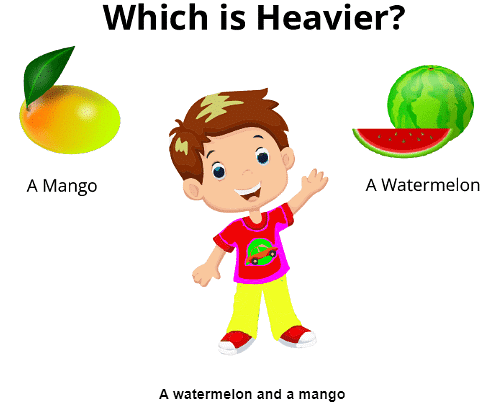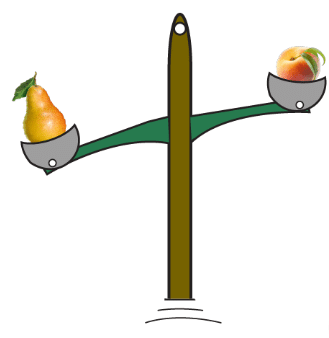Worksheet: Who Is Heavier - 2 | Worksheets with solutions for Class 3 PDF Download
Q1: An elephant weighs 120 kg and a tiger weighs 100 kg. Which one is heavier and why?
Q2: A watermelon weighs 6 kg and a mango weighs 1/2 kg. Which one is heavier and why? Also is it always true that an object which is bigger in size is heavier?
Q3: How many weights of 1 kg will be required to balance the weight of a 10 kg object?
Q4: Using the below image, explain which fruit is heavier.
Q5: The weight of a soft toy (made of cotton) is 1 kg whereas the weight of a car toy (made of steel) is 3 kg. Which one is heavier? Also, guess which is bigger in size.
Q6: A steel chair weighs 15 kg and a wooden bed also weighs 15 kg. Comment on their sizes. (does equal weight implies their size will be the same).
Q7: Which scale will you use to measure the weight of the gas cylinder?
Q8: How many weights of 1 kg will be required to balance the weight of a 6 kg object?
You can access the solutions to this worksheet here.
FAQs on Worksheet: Who Is Heavier - 2 - Worksheets with solutions for Class 3
| 1. What criteria are used to determine which object is heavier in the worksheet? |  |
| 2. How can I accurately measure the weight of different objects for the worksheet? |  |
| 3. What are some common misconceptions about weight and heaviness? |  |
| 4. Why is it important to understand the concept of weight in everyday life? |  |
| 5. How can I use this worksheet to teach children about weight and measurement? |  |





















